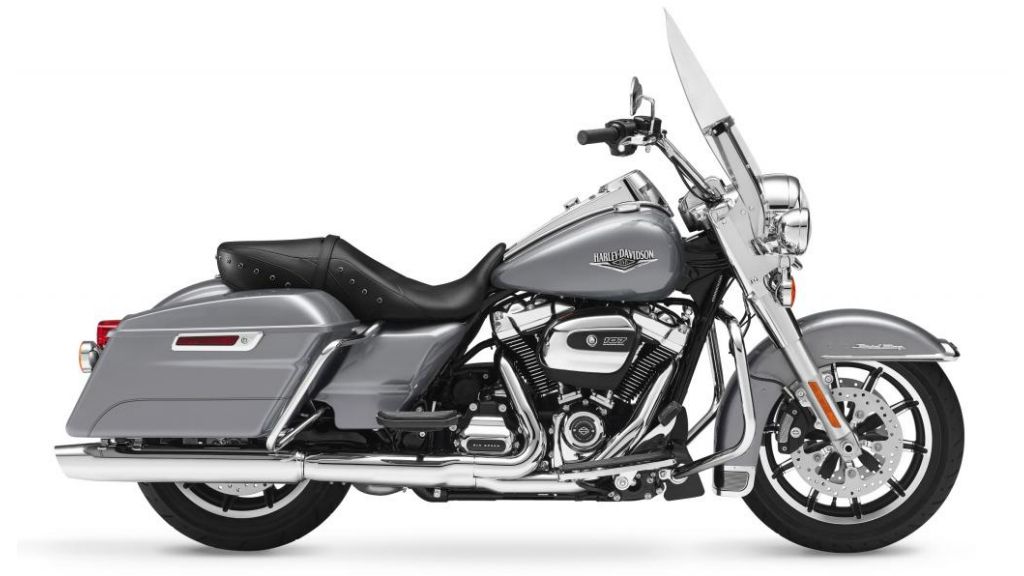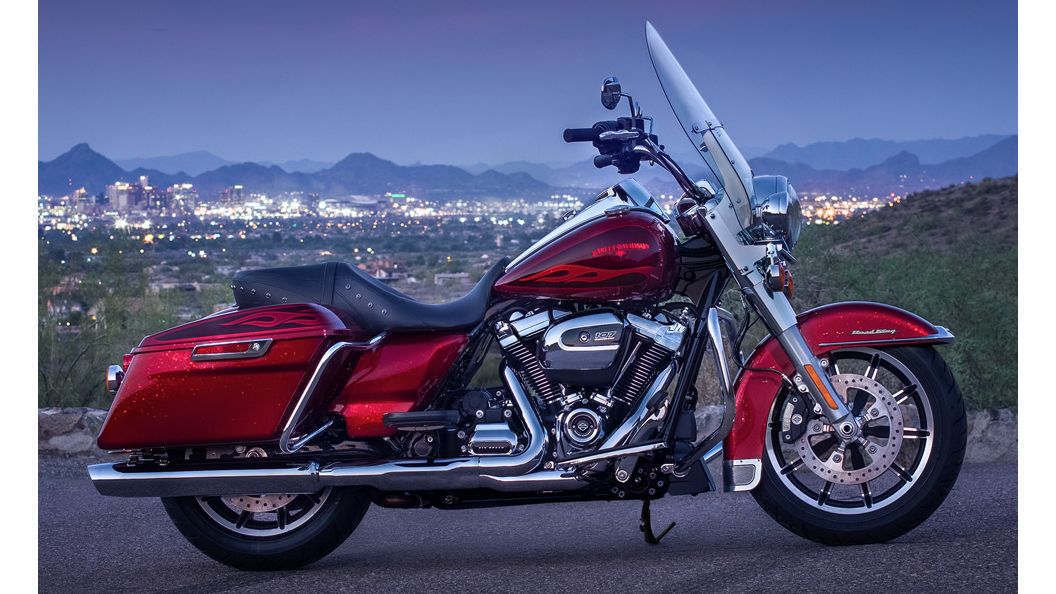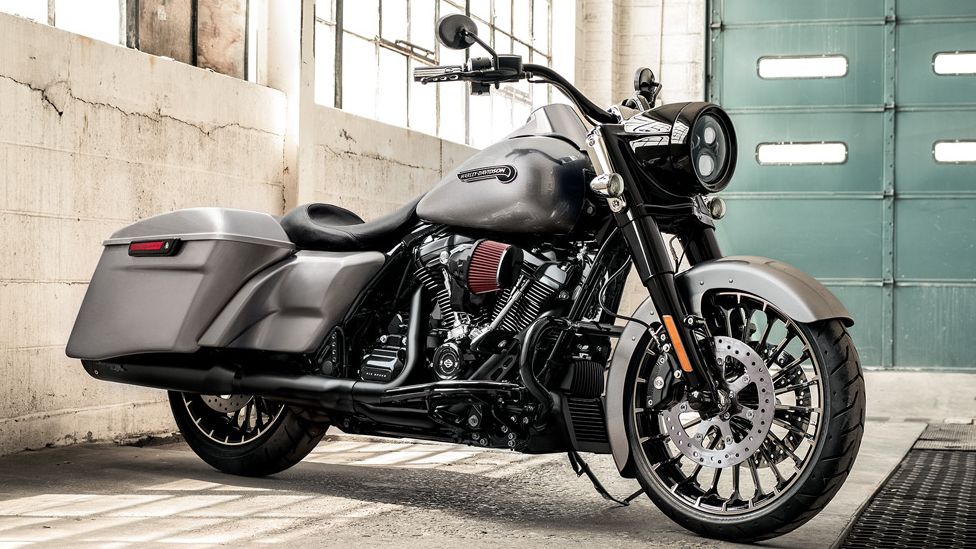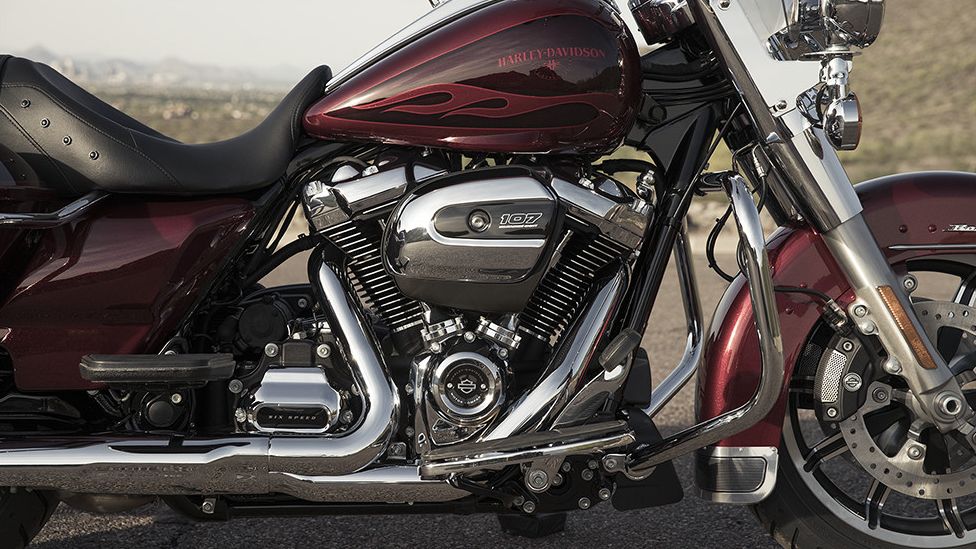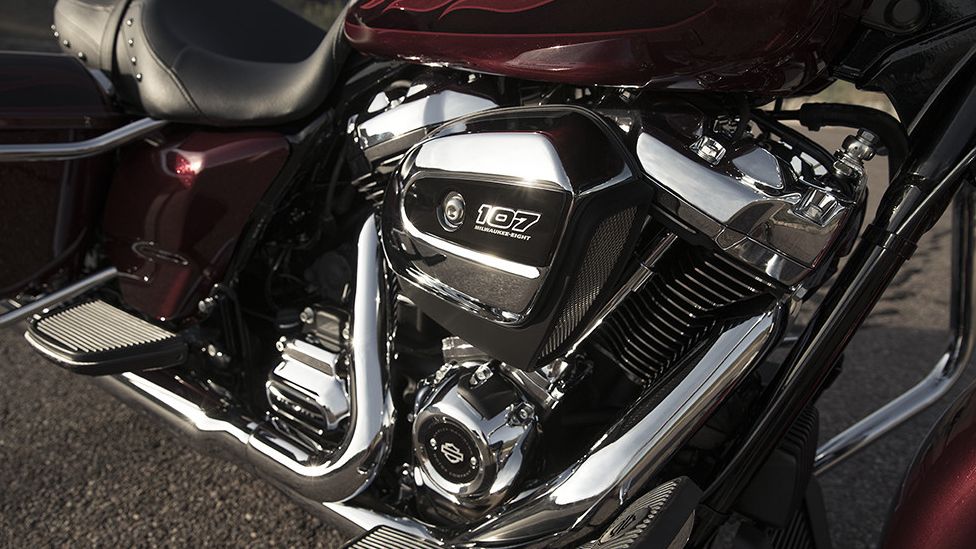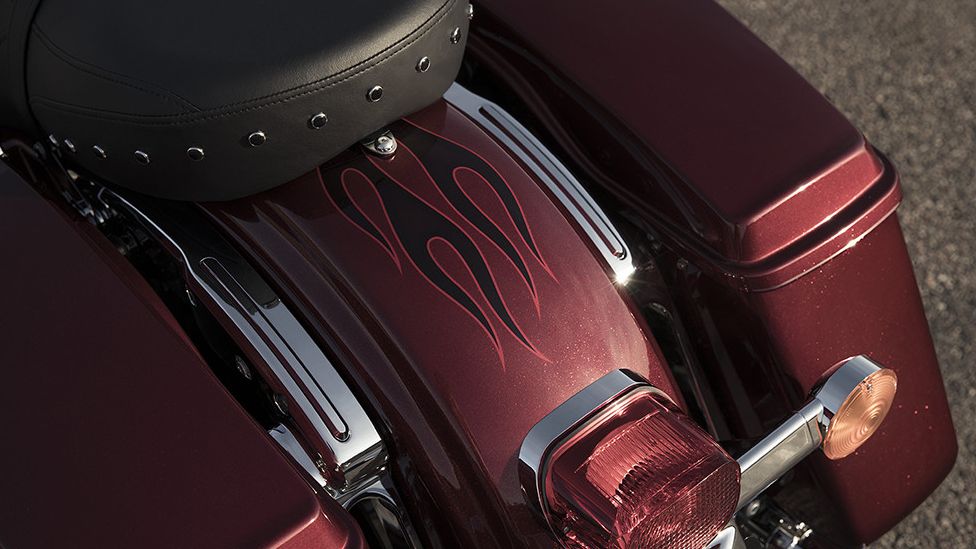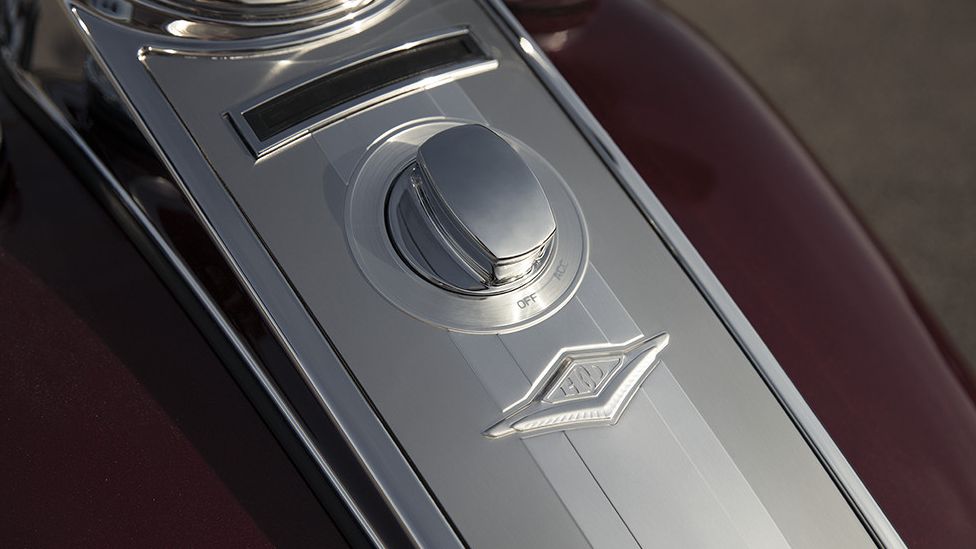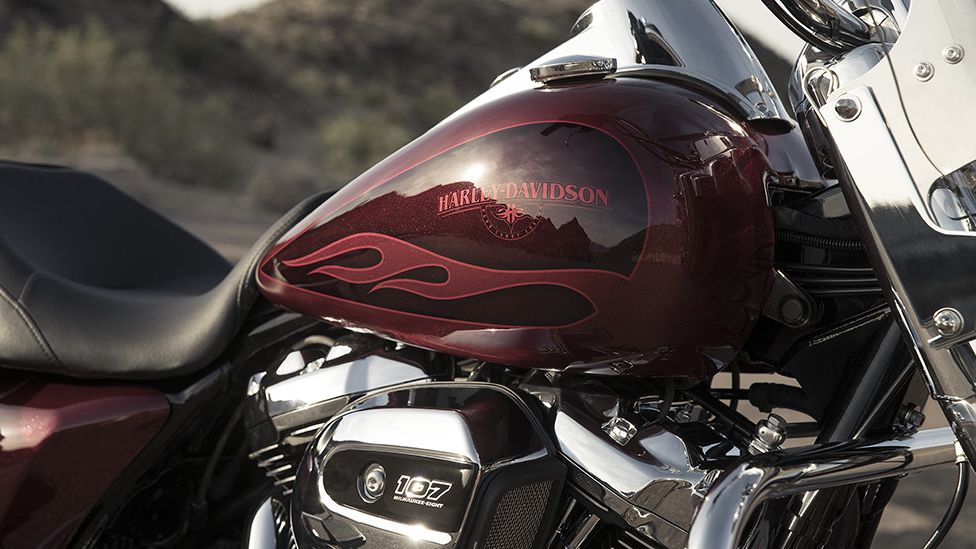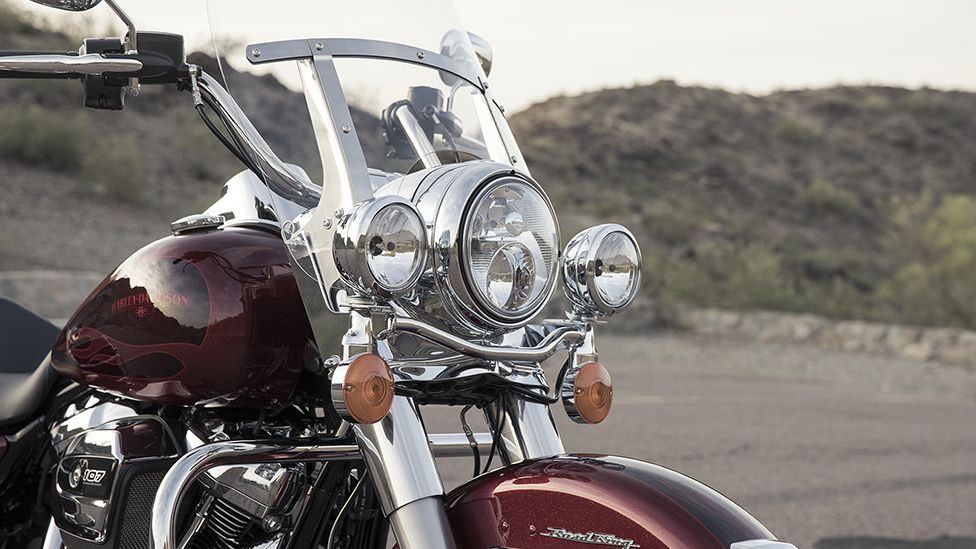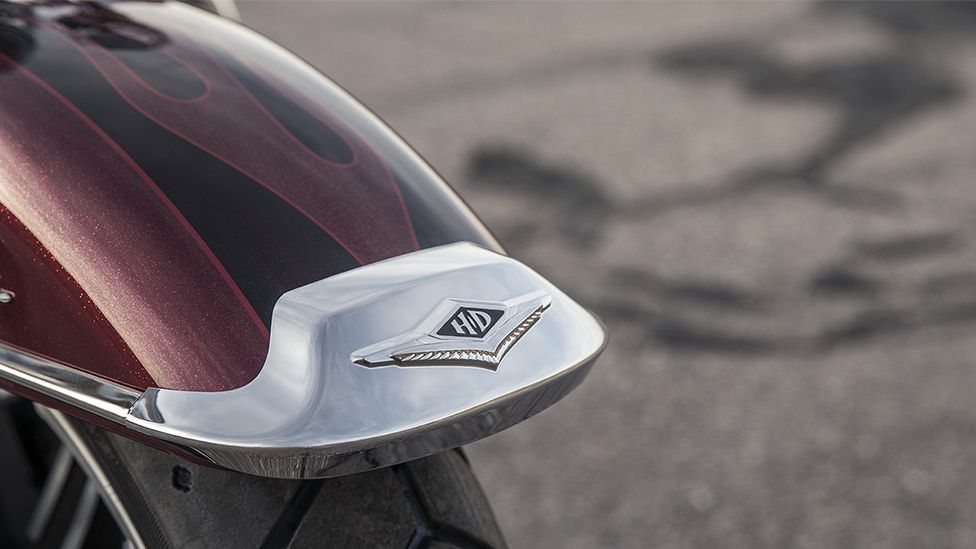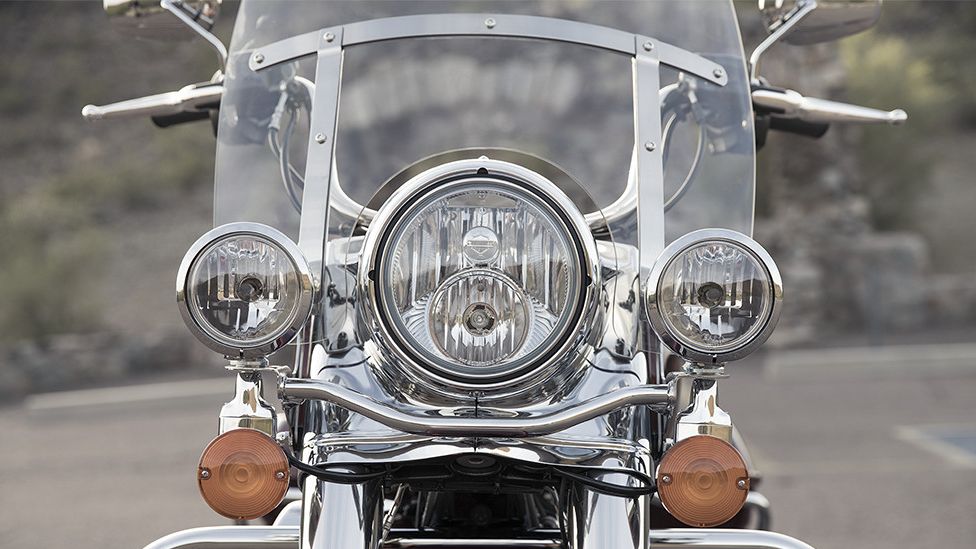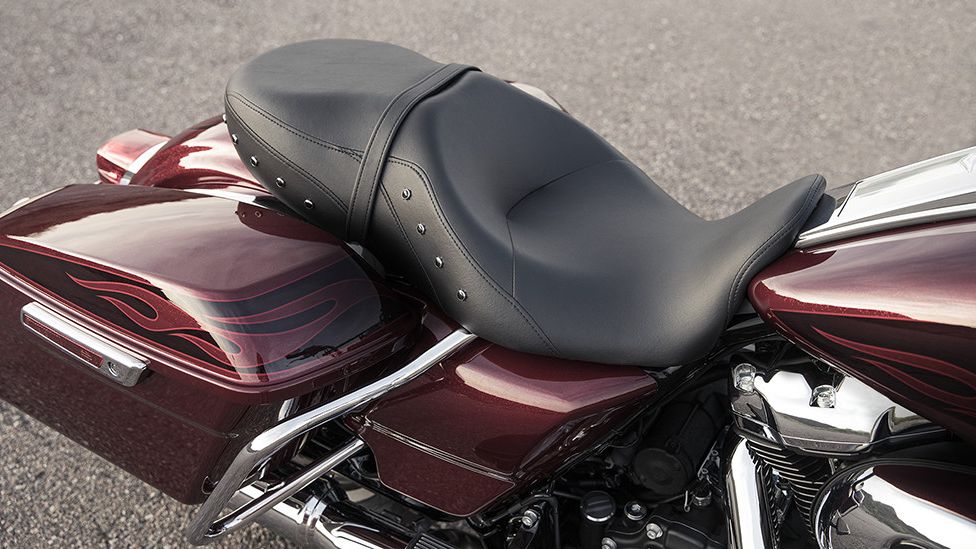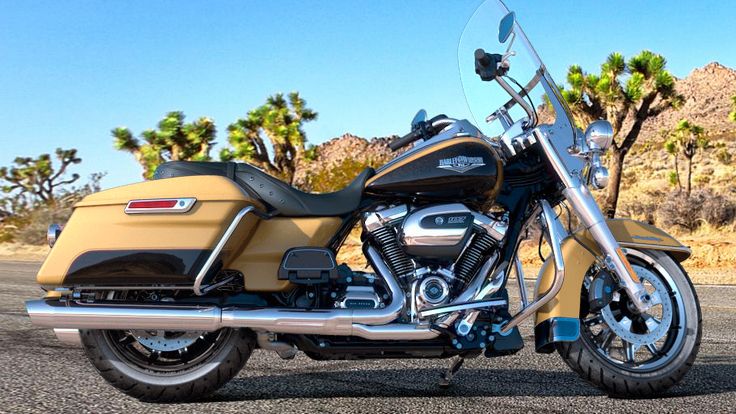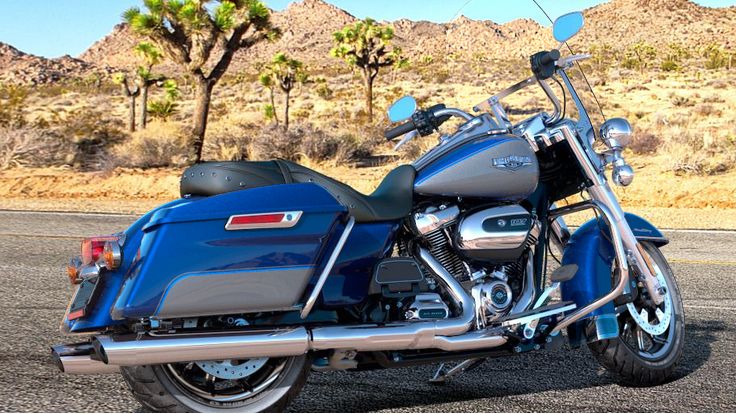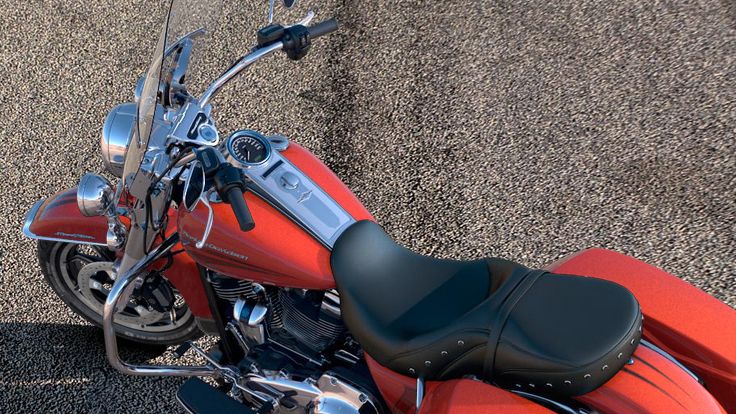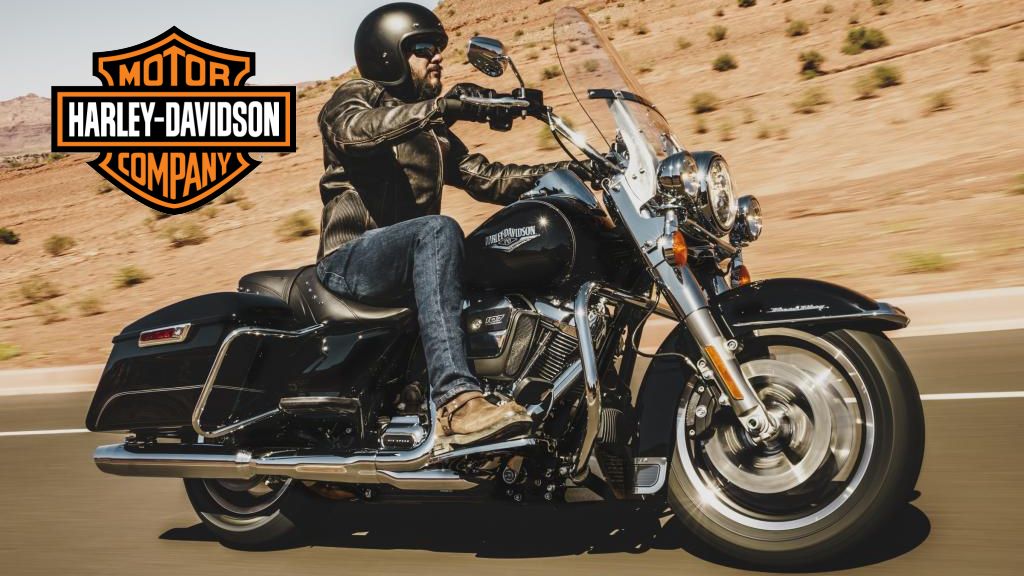The 2017 Harley-Davidson Road King->ke3392 brings classic, FL design elements and the MoCo's newest engine -- the Milwaukee-Eight -- together for this new generation of the touring king. Not only is the engine all new, but Harley->ke300 finally got out of its suspension rut and threw on something other than its usual vanilla components. Is it enough, and can it compete with other established cruise->ke392/tour->ke2669 models out there? What else has Harley hidden away in there? Join me as I take a good look at the new FLHR and check out what all the factory tucked in there to stay relevant in an ever more demanding market.
Continue reading for my review of the Harley-Davidson Road King.
2017 Harley-Davidson Road King
- Make: Array
- Model: 2017 Harley-Davidson Road King
- Engine/Motor: V-Twin
- [do not use] Vehicle Model: Array
Design
Longtime fans of the brand will recognize the influence of the old Duo-Glide circa 1958 and the FLH models that came after. Really, it's the front end that sets the tone with massive, 49 mm forks made to look even fatter with a chrome, “beer can” fork skirt and “Hiawatha” headlamp nacelle. Whisker-bar mounted passing lamps and turn signals finish the forward lighting, and a large, “Detachables” windshield crowns the whole assembly.
From there the upper lines tumble down the slope of the tank-mount instrument console and six-gallon fuel tank to the scoop of the saddle that sits at an unladen height of 28.2 inches. This low seat height and the low-profile primary chaincase cover means even vertically-challenged riders should be able to find the ground with both feet at once.
A relatively generous P-pad finishes the rear end atop the color-matched hard bags that help define the family. The bags come with Harley's “One-Touch” latches that work even when wearing gloves and together they provide 2.3 cubic-feet of storage; enough for a weekender or some fairly serious grocery-getting missions, and if you need more than that you should shift your gaze to the FLT models.
Chassis
The frame itself is rather conventional, and follows the same double-downtube, double-cradle format as the rest of the heavy-frame FL family. Made up mostly of mild-steel tubing, the frame uses a rectangular backbone to support the 826-pound wet weight and 1,360 GVWR. The steering head is set at 26 degrees, but an offset in the tripletree adds to that for a 29.25-degree fork angle with 6.7 inches of trail -- numbers that are obviously set up for stability at speed and low-fatigue cruising/touring.
A steering damper built into the head adds to the long-distance comfort and actually increases safety a bit, which is always good, right? Cast-aluminum “Impeller” wheels mount the 17-inch front and 16-inch rear tires that add visual weight to the bottom of the bike, though as usual, I think laced, chrome wheels and whitewall tires would pimp this ride considerably.
Folks, this is a lot of bike to keep under control, no doubt, but Harley went big on the brakes too with all-around, 300 mm discs and four-pot, opposed-piston Brembo calipers. A Linked-Brake system works to balance braking effort between the dual front brakes and the rear, and an optional ABS takes the contact-patch protection up another notch.
So, H-D gets credit for making some progress on this front, but I think we can all agree that there is still plenty of room for improvement. Suspension travel at the front axle measures out at 4.6 inches, and the rear still rides on the same paltry 3 inches of travel, but that's the price you pay to get that low seat height.
Drivetrain
Outwardly, the Mil-8 looks like another typical pushrod engine, but a glance at said pushrods clearly indicates that Harley is moving away from the twin-cam concept back toward the single cam like on the old Evos and even older Shovelheads. There are even bigger differences inside. Harley ditches the old hemi-type combustion chamber and piston for a flatter arrangement that reduces the heated surface within the engine, thus forcing more of the heat out with the waste gasses rather than absorbing that heat to be felt by the rider and passenger.
In a step to further reduce the heat felt by the passenger, Harley re-routed the rear-jug exhaust header forward of the transmission cover and away from the passenger's right foot, and relocated the catalytic converter to keep that hottest of components further away from the pillion. A single throttle body with electronic, sequential-port fuel injection feeds the engine through the four-valve heads for 45 mpg, but Harley missed an opportunity to really impress with some sort of variable engine mapping or traction control.
That said, the Mil-8 certainly doesn't disappoint with a smooth delivery of 111.4 pound-feet of torque at 3,250 rpm, and I'm not just throwing the word “smooth” in for fun; this mill shakes just enough to remind you that it is indeed a Harley-Davidson without rattling the fillings out of your teeth. Harley's six-speed “Cruise-Drive” transmission and belt final drive handle the rest with an “Assist & Slip” clutch to couple it to engine power. The slipper clutch decreases the effort needed to pull in the clutch by roughly 30 percent, and it adds another safety net by providing some back-torque protection during aggressive downshifts.
Price
As usual, Harley offers a range of prices depending on which color package you choose. The basic Vivid Black model rolls for $18,999 with a whole fistful of color options that can drive the price as high as $21,399. Options such as the ABS and security system will set you back another $795 and $395 respectively, and as usual, California riders can expect to take a $200 hit for their special emissions package.
Competitor
At first I was eyeballing the Gold Wing F6B from Honda->ke291. It carries a large engine and is set up for cruising/touring by virtue of its hard bags and chopped windshield, but the fairing really pushes it into another category. It's likely that folks looking at a Road King are probably not going to be interested in the looks of the Honda. If it's that late-'40s look they want, they can find a virtual doppelganger in the Indian Springfield.
The front ends look almost interchangeable with only the classic full skirt and Indian-head ornament to really set the Springfield apart from its rival. The rest of the bike is similar as well, just with a bit more shape to the bags and an overall Indian-ish-ness about the rear end by virtue of the closed-in look created by the body panels.
Indian's powerplant is pretty as well, with the chrome Thunder Stroke 111 and its unmistakable flathead charm, but the new Mil-8 engine has the usual Harley appeal. Maybe even moreso since the cam housing/nosecone has gone back to single-cam size from the unappealing chunk that it was on the right side of the Twin Cam.
The 111 cubic-inch Thunder Stroke cranks out 119.2 pound-feet at 3,000 rpm, just a skosh more than the 111.4 pounds of grunt from the Mil-8. Of course, the Springfield weighs in at 862 pounds soaking wet while the FLHR is lighter at 826 pounds wet, a difference that will soak up some of that power advantage to be sure. Suspension and brake components are similar enough to be a moot point, and the main difference in the chassis would be that Indian prefers cast aluminum while Harley sticks with stamped-and-welded mild steel.
Indian comes off looking pretty good at the checkout with a $20,999 sticker, a bit more than the black Road King, but a bit less than the top paint package. I still say both are a little proud for what you get, and the price represents another area with some room for improvement for both manufacturers. (I ain't holding my breath on that one, mind you.)
He Said
“Well, I gotta say that while I'm pleased Harley started looking at suspension, I just want to scream at someone to explain to me why it's so hard to go to some sort of dial-in forks. There are plenty on the market, and Hell, it ain't like Harley is making the ones it uses now, so as long as we are just bolting up someone else's forks, why not bolt up some forks with tuneable features, hmmm? I do, however, like the idea of the handwheel-adjustable rear shocks, at least that's more convenient than air shocks or the old spanner type adjuster.”
She Said
My wife and fellow motorcycle writer, Allyn Hinton, says, "I am so excited about the new Milwaukee engines, and can't wait until I have a chance to take one apart -- yes, I'm a mechanic; that's what I think about. If there's one thing I'd have to say negative about this new Road King, it's that I'm not feeling that Laguna Orange. It looks almost -- dare I say it -- like a Victory->ke1801 color. Honestly, if that's the worst thing I can come up with, it's looking pretty good indeed."
Specifications
|
ENGINE: |
|
|
Engine: |
Milwaukee-Eight™ 107 |
|
Bore: |
3.937 in. |
|
Stroke: |
4.374 in. |
|
Displacement: |
107 cu in |
|
Compression Ratio: |
10.0:1 |
|
Fuel System: |
Electronic Sequential Port Fuel Injection (ESPFI) |
|
DRIVETRAIN: |
|
|
Primary Drive: |
Chain, 34/46 ratio |
|
Gear Ratios (overall): |
|
|
1st: |
9.593 |
|
2nd: |
6.65 |
|
3rd: |
4.938 |
|
4th: |
4.0 |
|
5th: |
3.407 |
|
6th: |
2.875 |
|
CHASSIS: |
|
|
Exhaust: |
Chrome, 2-1-2 dual exhaust with tapered mufflers |
|
Wheels, Front Type: |
Impeller Cast Aluminum |
|
Wheels, Rear Type: |
Impeller Cast Aluminum |
|
Brakes, Caliper Type: |
32 mm, 4-piston fixed front and rear |
|
PERFORMANCE: |
|
|
Engine Torque Testing Method: |
J1349 |
|
Engine Torque: |
111.4 ft-lb |
|
Engine Torque (rpm): |
3,250 |
|
Lean Angle, Right (deg.): |
32 |
|
Lean Angle, Left (deg.): |
32.1 |
|
Fuel Economy: Combined City/Hwy: |
45 mpg |
|
DIMENSIONS: |
|
|
Length: |
94.3 in. |
|
Seat Height, Laden: |
26.3 in. |
|
Seat Height, Unladen: |
28.2 in. |
|
Ground Clearance: |
5.3 in. |
|
Rake (steering head) (deg): |
26 |
|
Trail: |
6.7 in. |
|
Wheelbase: |
64 in. |
|
Tires, Front Specification: |
BW 130/80B17 65H |
|
Tires, Rear Specification: |
BW 180/65B16 81H |
|
Fuel Capacity: |
6 gal. |
|
Oil Capacity (w/filter): |
5.2 qt. |
|
Weight, As Shipped: |
791 lb. |
|
Weight, In Running Order: |
826 lb. |
|
Luggage Capacity -Volume: |
2.3 cu ft |
|
ELECTRIC: |
|
|
Lights (as per country regulation), Indicator Lamps: |
High beam, running lights, directional light bar, neutral, low oil pressure, engine diagnostics, turn signals, battery, security system (optional), low fuel warning, cruise control, ABS (optional), Gear/RPM display, miles to empty display |
|
Gauges: |
Tank-mounted electronic speedometer with ergonomic hand controls with intuitive design for improved tactile feel. Includes new trigger switch for odometer, trip A, trip B, clock, range to empty, tachometer, and gear indicator |
|
COLORS: |
Vivid Black, Billet Silver, Black Hills Gold/Black Quartz, Superior Blue/Billet Silver, Laguna Orange, Hard Candy Hot Rod Red Flake |
|
PRICE: |
Vivid Black $18,999, Color Option $19,449, Two-Tone Option $19,799, Custom Color Option $19,999, Hard Candy Color Option $21,399 |

